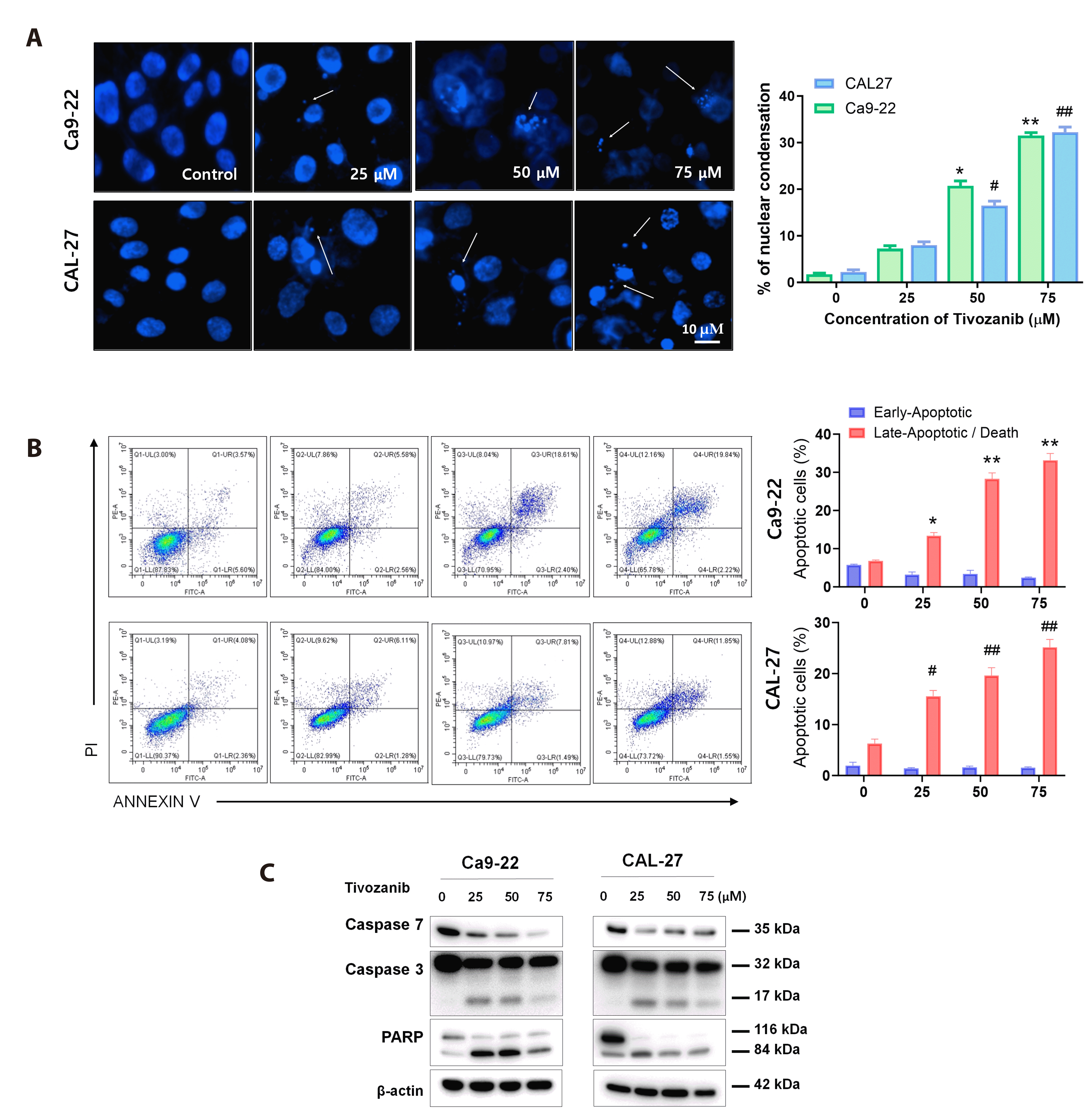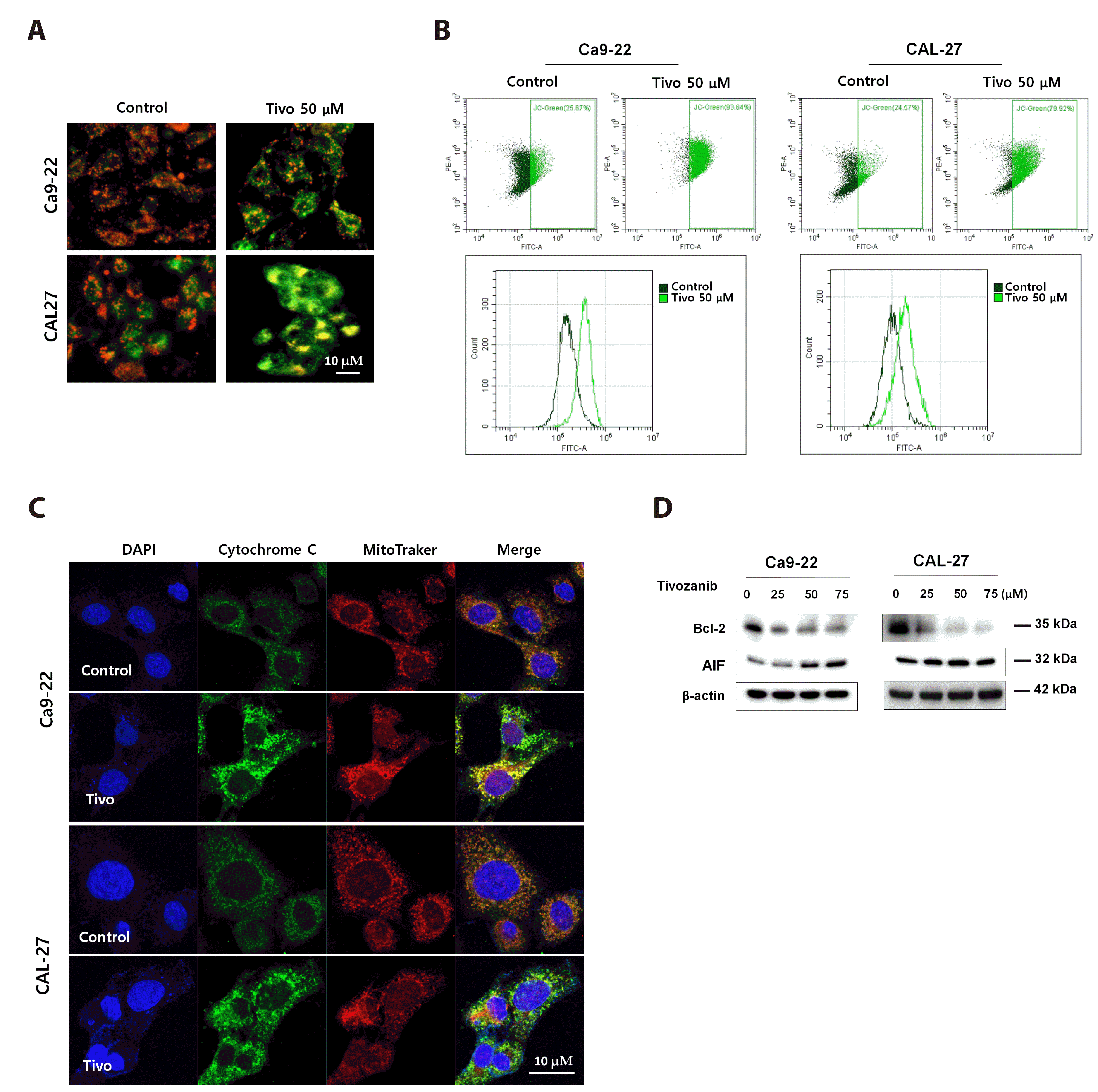3. Pisani P, Airoldi M, Allais A, Aluffi Valletti P, Battista M, Benazzo M, Briatore R, Cacciola S, Cocuzza S, Colombo A, Conti B, Costanzo A, Della Vecchia L, Denaro N, Fantozzi C, Galizia D, Garzaro M, Genta I, Iasi GA, Krengli M, et al. 2020; Metastatic disease in head & neck oncology. Acta Otorhinolaryngol Ital. 40(SUPPL. 1):S1–S86. DOI:
10.14639/0392-100X-suppl.1-40-2020. PMID:
32469009. PMCID:
PMC7263073.

4. Kerawala C, Roques T, Jeannon JP, Bisase B. 2016; Oral cavity and lip cancer: United Kingdom national multidisciplinary guidelines. J Laryngol Otol. 130:S83–S89. DOI:
10.1017/S0022215116000499. PMID:
27841120. PMCID:
PMC4873943.

5. Voss JO, Freund L, Neumann F, Mrosk F, Rubarth K, Kreutzer K, Doll C, Heiland M, Koerdt S. 2022; Prognostic value of lymph node involvement in oral squamous cell carcinoma. Clin Oral Investig. 26:6711–6720. DOI:
10.1007/s00784-022-04630-7. PMID:
35895143. PMCID:
PMC9643253.

7. Kashyap D, Garg VK, Goel N. 2021; Intrinsic and extrinsic pathways of apoptosis: role in cancer development and prognosis. Adv Protein Chem Struct Biol. 125:73–120. DOI:
10.1016/bs.apcsb.2021.01.003. PMID:
33931145.

8. Jan R, Chaudhry GE. 2019; Understanding apoptosis and apoptotic pathways targeted cancer therapeutics. Adv Pharm Bull. 9:205–218. DOI:
10.15171/apb.2019.024. PMID:
31380246. PMCID:
PMC6664112.

12. Assani G, Zhou Y. 2019; Effect of modulation of epithelial-mesenchymal transition regulators Snail1 and Snail2 on cancer cell radiosensitivity by targeting of the cell cycle, cell apoptosis and cell migration/invasion. Oncol Lett. 17:23–30. DOI:
10.3892/ol.2018.9636. PMID:
30655734. PMCID:
PMC6313178.
13. Das V, Bhattacharya S, Chikkaputtaiah C, Hazra S, Pal M. 2019; The basics of epithelial-mesenchymal transition (EMT): a study from a structure, dynamics, and functional perspective. J Cell Physiol. 234:14535–14555. DOI:
10.1002/jcp.28160. PMID:
30723913.

14. Huang Y, Hong W, Wei X. 2022; The molecular mechanisms and therapeutic strategies of EMT in tumor progression and metastasis. J Hematol Oncol. 15:129. DOI:
10.1186/s13045-022-01347-8. PMID:
36076302. PMCID:
PMC9461252.

16. Van den Eynde C, De Clercq K, Van Bree R, Luyten K, Annibali D, Amant F, Han S, Van Nieuwenhuysen E, Baert T, Peeraer K, Voets T, Van Gorp T, Vriens J. 2021; TRP channel expression correlates with the epithelial-mesenchymal transition and high-risk endometrial carcinoma. Cell Mol Life Sci. 79:26. DOI:
10.1007/s00018-021-04023-1. PMID:
34936030. PMCID:
PMC8732886.

17. Momeny M, Moghaddaskho F, Gortany NK, Yousefi H, Sabourinejad Z, Zarrinrad G, Mirshahvaladi S, Eyvani H, Barghi F, Ahmadinia L, Ghazi-Khansari M, Dehpour AR, Amanpour S, Tavangar SM, Dardaei L, Emami AH, Alimoghaddam K, Ghavamzadeh A, Ghaffari SH. 2017; Blockade of vascular endothelial growth factor receptors by tivozanib has potential anti-tumour effects on human glioblastoma cells. Sci Rep. 7:44075. DOI:
10.1038/srep44075. PMID:
28287096. PMCID:
PMC5347040.

19. Schiavoni V, Campagna R, Pozzi V, Cecati M, Milanese G, Sartini D, Salvolini E, Galosi AB, Emanuelli M. 2023; Recent advances in the management of clear cell renal cell carcinoma: novel biomarkers and targeted therapies. Cancers (Basel). 15:3207. DOI:
10.3390/cancers15123207. PMID:
37370817. PMCID:
PMC10296504.

20. Moore JD, Yang J, Truant R, Kornbluth S. 1999; Nuclear import of Cdk/cyclin complexes: identification of distinct mechanisms for import of Cdk2/cyclin E and Cdc2/cyclin B1. J Cell Biol. 144:213–224. DOI:
10.1083/jcb.144.2.213. PMID:
9922449. PMCID:
PMC2132890.

21. Qian S, Wei Z, Yang W, Huang J, Yang Y, Wang J. 2022; The role of BCL-2 family proteins in regulating apoptosis and cancer therapy. Front Oncol. 12:985363. DOI:
10.3389/fonc.2022.985363. PMID:
36313628. PMCID:
PMC9597512.

22. Anaya-Saavedra G, Ramírez-Amador V, Irigoyen-Camacho ME, García-Cuellar CM, Guido-Jiménez M, Méndez-Martínez R, García-Carrancá A. 2008; High association of human papillomavirus infection with oral cancer: a case-control study. Arch Med Res. 39:189–197. DOI:
10.1016/j.arcmed.2007.08.003. PMID:
18164962.

23. Ram H, Sarkar J, Kumar H, Konwar R, Bhatt ML, Mohammad S. 2011; Oral cancer: risk factors and molecular pathogenesis. J Maxillofac Oral Surg. 10:132–137. DOI:
10.1007/s12663-011-0195-z. PMID:
22654364. PMCID:
PMC3177522.

24. Bugshan A, Farooq I. 2020; Oral squamous cell carcinoma: metastasis, potentially associated malignant disorders, etiology and recent advancements in diagnosis. F1000Res. 9:229. DOI:
10.12688/f1000research.22941.1. PMID:
32399208. PMCID:
PMC7194458.

25. Cao LM, Zhong NN, Li ZZ, Huo FY, Xiao Y, Liu B, Bu LL. 2023; Lymph node metastasis in oral squamous cell carcinoma: Where we are and where we are going. Clin Transl Discov. 3:e227. DOI:
10.1002/ctd2.227.

26. Canino C, Perrone L, Bosco E, Saltalamacchia G, Mosca A, Rizzo M, Porta C. 2019; Targeting angiogenesis in metastatic renal cell carcinoma. Expert Rev Anticancer Ther. 19:245–257. DOI:
10.1080/14737140.2019.1574574. PMID:
30678509.

27. Momeny M, Sabourinejad Z, Zarrinrad G, Moghaddaskho F, Eyvani H, Yousefi H, Mirshahvaladi S, Poursani EM, Barghi F, Poursheikhani A, Dardaei L, Bashash D, Ghazi-Khansari M, Tavangar SM, Dehpour AR, Yaghmaie M, Alimoghaddam K, Ghavamzadeh A, Ghaffari SH. 2017; Anti-tumour activity of tivozanib, a pan-inhibitor of VEGF receptors, in therapy-resistant ovarian carcinoma cells. Sci Rep. 7:45954. DOI:
10.1038/srep45954. PMID:
28383032. PMCID:
PMC5382685.

28. Pietenpol JA, Stewart ZA. 2002; Cell cycle checkpoint signaling: cell cycle arrest versus apoptosis. Toxicology. 181-182:475–481. DOI:
10.1016/S0300-483X(02)00460-2. PMID:
12505356.
29. Raleigh JM, O'Connell MJ. 2000; The G(2) DNA damage checkpoint targets both Wee1 and Cdc25. J Cell Sci. 113:1727–1736. DOI:
10.1242/jcs.113.10.1727. PMID:
10769204.

30. Rogalińska M. 2002; Alterations in cell nuclei during apoptosis. Cell Mol Biol Lett. 7:995–1018.
31. Lucken-Ardjomande S, Martinou JC. 2005; Regulation of Bcl-2 proteins and of the permeability of the outer mitochondrial membrane. C R Biol. 328:616–631. DOI:
10.1016/j.crvi.2005.05.002. PMID:
15992745.

32. Gottlieb E, Armour SM, Harris MH, Thompson CB. 2003; Mitochondrial membrane potential regulates matrix configuration and cytochrome c release during apoptosis. Cell Death Differ. 10:709–717. DOI:
10.1038/sj.cdd.4401231. PMID:
12761579.

33. Sivandzade F, Bhalerao A, Cucullo L. 2019; Analysis of the mitochondrial membrane potential using the cationic JC-1 dye as a sensitive fluorescent probe. Bio Protoc. 9:e3128. DOI:
10.21769/BioProtoc.3128. PMID:
30687773. PMCID:
PMC6343665.

34. Santucci R, Sinibaldi F, Cozza P, Polticelli F, Fiorucci L. 2019; Cytochrome c: an extreme multifunctional protein with a key role in cell fate. Int J Biol Macromol. 136:1237–1246. DOI:
10.1016/j.ijbiomac.2019.06.180. PMID:
31252007.

35. Sevrioukova IF. 2011; Apoptosis-inducing factor: structure, function, and redox regulation. Antioxid Redox Signal. 14:2545–2579. DOI:
10.1089/ars.2010.3445. PMID:
20868295. PMCID:
PMC3096518.

36. Noguti J, De Moura CF, De Jesus GP, Da Silva VH, Hossaka TA, Oshima CT, Ribeiro DA. 2012; Metastasis from oral cancer: an overview. Cancer Genomics Proteomics. 9:329–335.
37. Chen T, You Y, Jiang H, Wang ZZ. 2017; Epithelial-mesenchymal transition (EMT): a biological process in the development, stem cell differentiation, and tumorigenesis. J Cell Physiol. 232:3261–3272. DOI:
10.1002/jcp.25797. PMID:
28079253. PMCID:
PMC5507753.

38. Guarino M, Rubino B, Ballabio G. 2007; The role of epithelial-mesenchymal transition in cancer pathology. Pathology. 39:305–318. DOI:
10.1080/00313020701329914. PMID:
17558857.

39. Hu QP, Kuang JY, Yang QK, Bian XW, Yu SC. 2016; Beyond a tumor suppressor: soluble E-cadherin promotes the progression of cancer. Int J Cancer. 138:2804–2812. DOI:
10.1002/ijc.29982. PMID:
26704932.

40. Luo SL, Xie YG, Li Z, Ma JH, Xu X. 2014; E-cadherin expression and prognosis of oral cancer: a meta-analysis. Tumour Biol. 35:5533–5537. DOI:
10.1007/s13277-014-1728-0. PMID:
24573611.

41. Marla V, Hegde V, Shrestha A. 2015; Relationship of angiogenesis and oral squamous cell carcinoma. Kathmandu Univ Med J (KUMJ). 13:178–185. DOI:
10.3126/kumj.v13i2.16796. PMID:
26643840.

42. Foda HD, Zucker S. 2001; Matrix metalloproteinases in cancer invasion, metastasis and angiogenesis. Drug Discov Today. 6:478–482. DOI:
10.1016/S1359-6446(01)01752-4. PMID:
11344033.

43. Takahashi S. 2011; Vascular endothelial growth factor (VEGF), VEGF receptors and their inhibitors for antiangiogenic tumor therapy. Biol Pharm Bull. 34:1785–1788. DOI:
10.1248/bpb.34.1785. PMID:
22130231.

44. Park SJ, Lee N, Jeong CH. 2024; ACY-241, a histone deacetylase 6 inhibitor, suppresses the epithelial-mesenchymal transition in lung cancer cells by downregulating hypoxia-inducible factor-1 alpha. Korean J Physiol Pharmacol. 28:83–91. DOI:
10.4196/kjpp.2024.28.1.83. PMID:
38154967. PMCID:
PMC10762487.









 PDF
PDF Citation
Citation Print
Print


 XML Download
XML Download